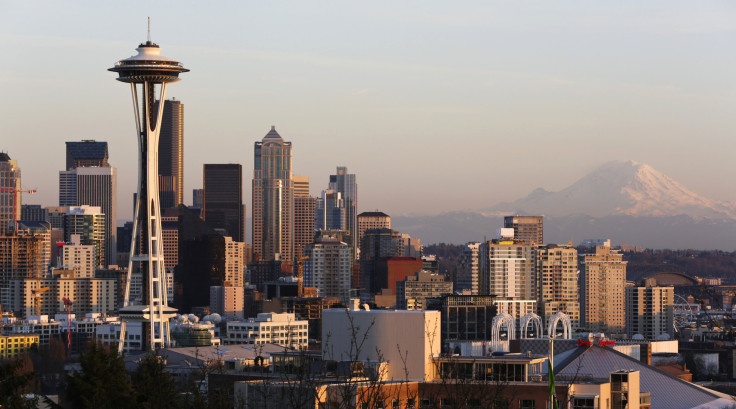Is Climate Change Manmade Or Natural? West Coast Warming Linked To ‘Changing Winds’

Winds, rather than human activity, may have played a greater role in climate change, at least in the U.S. Northwest where temperatures have risen by 2 degrees Fahrenheit, or 1 degree Celsius, since 1900, research indicates. Changes in wind patterns, not human interference, may account for 80 percent of that shift, a study published in the journal Proceedings of the National Academy of Sciences indicates.
The study suggests in the past century, winds in the region have weakened and changed direction, causing sea surface temperatures to rise. The result of weaker winds is less ocean surface evaporation and lower air pressure at sea level. It is similar to what happens on a smaller scale with climate patterns like El Niño and the Pacific Decadal Oscillation, a cycle of warming and cooling in the Pacific Ocean that occurs every 15 to 30 years. James Johnstone, a climatologist and co-author of the study, described the results of his research as “a phenomenal correlation.” The region affected by this phenomenon includes Washington, Oregon and northern California.
“The concept of winds controlling or affecting ocean temperature in that very way is not controversial, but the strength of that relationship was quite amazing,” Johnstone told the New York Times. “It explains practically every wiggle in the ocean temperature variations.” Johnstone said large-scale changes in atmospheric and ocean circulation can overshadow the effects of an increase in greenhouse gases, which hit a record in 2012, according to the World Meteorological Organization.
There is often a tendency to interpret any long-term warming trend as being related to manmade climate change, researchers said, but in this case, there was no obvious link between temperature changes in the Northwest U.S. and human-induced global warming. While the results of the study minimized the effect humans have had on the Pacific Northwest climate, its authors emphasized the study is not an indication that all climate change is natural.
“In certain places, natural variability is extremely large compared to the anthropogenic signal,” Johnstone told Climate Central. “That’s not going to necessarily be true in 50 or 100 years. The anthropogenic signal is going to amplify in time.”
In April, scientists from McGill University in Montreal said there was a 99 percent likelihood global warming is something other than natural fluxes in Earth’s climate. However, climate change deniers, including Patrick Moore, ecologist and co-founder of the activist group Greenpeace, cast doubt on the widely accepted theory that climate change is the result of human activity.
“There is no scientific proof that human emissions of carbon dioxide are the dominant cause of the minor warming of the Earth’s atmosphere over the past 100 years,” Moore said during an appearance before the Senate Environment and Public Works Committee in February.
The study looking at changes in temperatures in the Pacific Northwest ruled out the possibility the wind changes themselves were the result of manmade climate change. Researchers found temperatures in the region rose most dramatically when carbon dioxide levels were at their lowest, the New York Times said.
© Copyright IBTimes 2024. All rights reserved.












